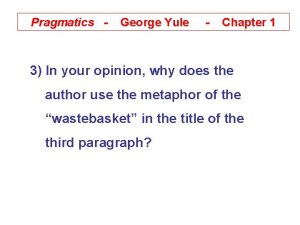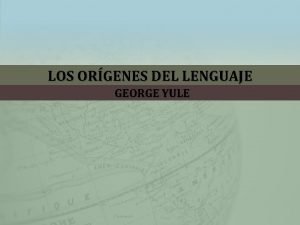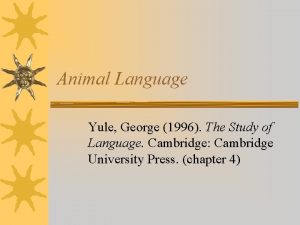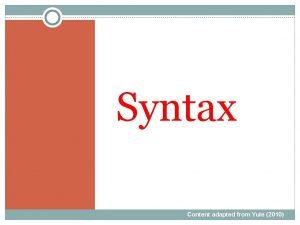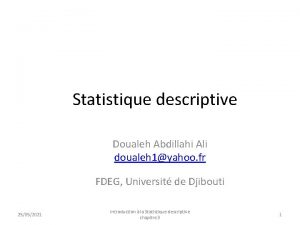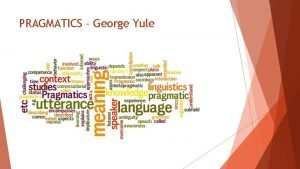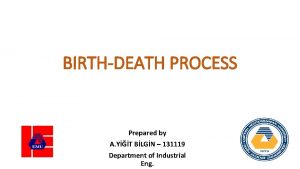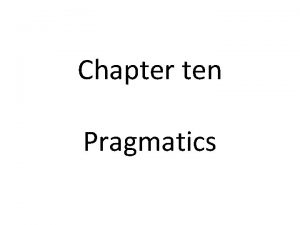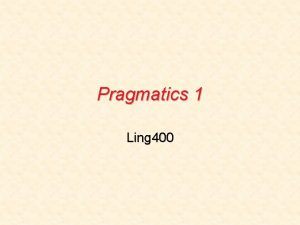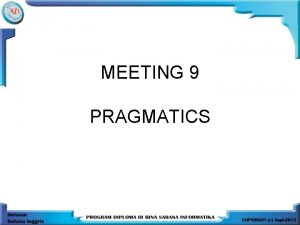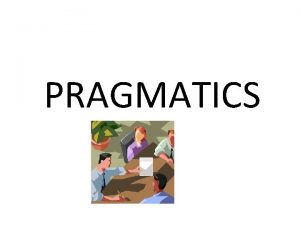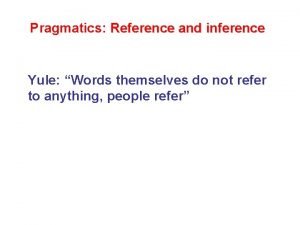Pragmatics George Yule Chapter 1 3 In your









- Slides: 9

Pragmatics - George Yule - Chapter 1 3) In your opinion, why does the author use the metaphor of the “wastebasket” in the title of the third paragraph?

Metaphor: when you use two nouns and compare or contrast them to one another. Unlike simile, you don't use "like" or "as" in the comparison. Examples: “I am a rainbow” "All the world's a stage" (Shakespeare) People invent metaphors to describe things and concepts in very vivid ways.

A metaphor consists of two main parts: the tenor and the vehicle. The tenor is the subject to which the metaphor is applied. The vehicle is the metaphorical term through which the tenor is applied. These two parts come together to reach a point of similarity known as a ground.

For Example: Life is a yo-yo. (It's a series of ups and downs). Here, life is the tenor and yo-yo is the vehicle. The fact that both life and a yo-yo have ups and downs is the ground.

In our case pragmatics is the tenor and wastebasket is the vehicle. The fact that both the wastebasket and pragmatics “contain” ordinary language in use is the ground. .

What is the meaning of this metaphor? Ordinary language in use is not the focus of linguists and philosophers of language, mainly interested in the “abstract, potentially universal features of language”. Ordinary language in use is so marginal in their studies that is pushed to the “edges” of their “work tables” and ends up in the “wastebasket”. Ordinary language in use is the focus of Pragmatics. Conclusion: Pragmatics is interested in the contents of that wastebasket.

Example from the chapter: The duck ran up to Mary and licked her. Syntactic analysis: interested in structure correctness, not in the meaning The table ran up to Mary might be considered correct as well Semantic analysis: interested in the meaning (The table ran up to Mary is not correct because the table is inanimate and can’t run, The duck ran up to Mary is Ok because the duck is animate and can run)

Semantic analysis: Interested in the truth-conditions: The duck ran up to Mary = p & The duck licked Mary = q p&q If p is true and q is true, then p & q is true, and vice versa. If p & q is true, then q & p is true The duck licked Mary & The duck ran up to Mary But this is a sequence, the symbol & here stands for “and then” not for “and”.

We know that the order of mention is a reflection of the order of occurrence. This is not a rule, it’s a pragmatic principle that makes sense of what we hear or read. Another pragmatic principle: “The more two speakers have in common, the less language they’ll need to use to identify familiar things”
